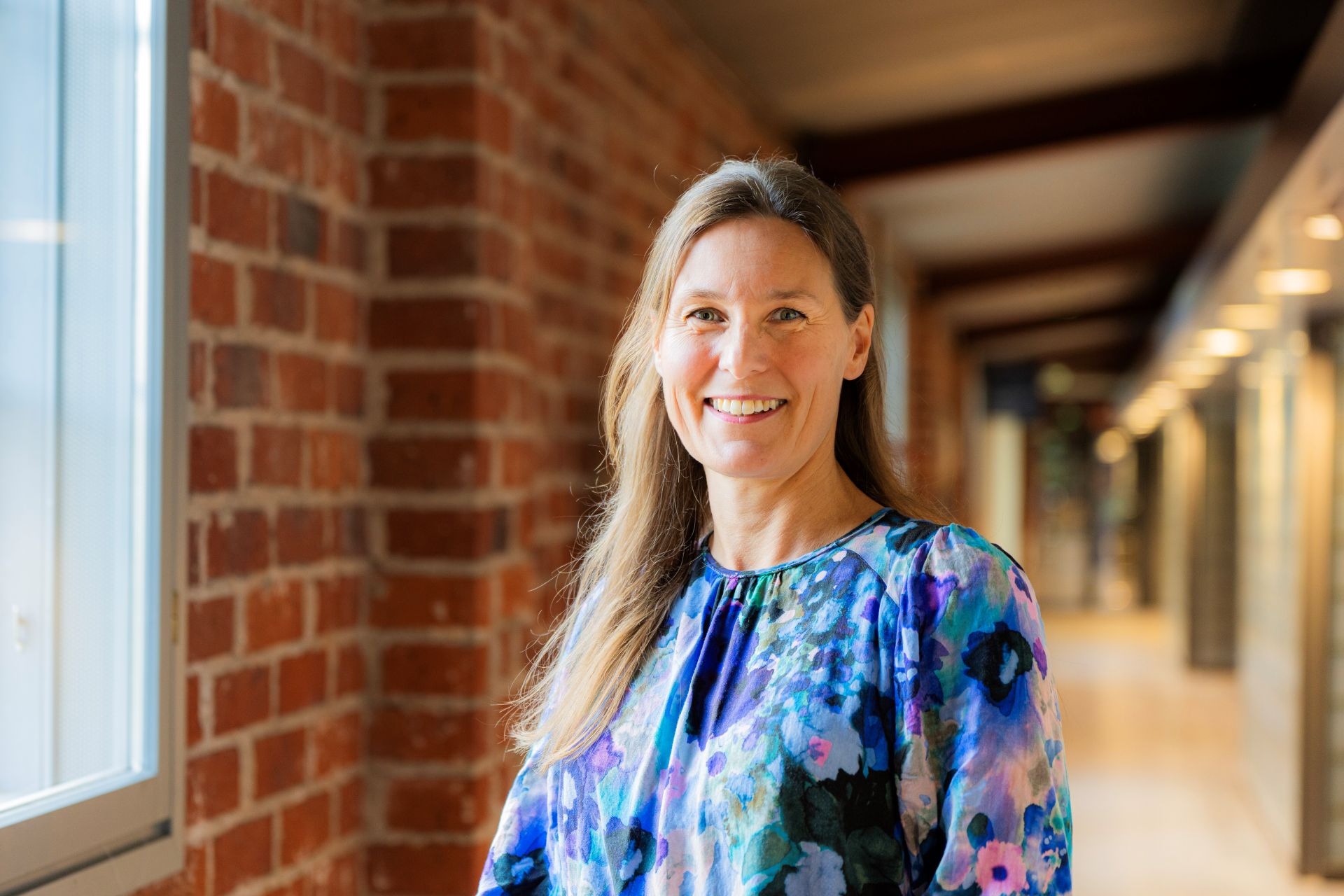Art or culture is not an add-on to everyday life, a single aesthetic experience. It is a life force, a source of inclusion and well-being—and the ability to see and make new connections. As such, it is a skill for the future, says Anna Jussilainen, Senior lecturer at the Creative Well-being Master’s degree programme.

Published:
Edited:
Text by Satu Haapala, photos by Sini Saarinen
I am sitting with Anna Jussilainen in the conference room of the Linnankatu Art Campus to discuss creative well-being, or arts & health how it is internationally more widely known. This concept, on the one hand a little strange and unfamiliar, on the other a commonplace and obvious one, gets us both excited.
”Recognition of the role of creativity, whatever the sector, would be important. Creativity is the engine of life! It is in all of us, it feeds something essential to being human. The working life of the future will require the ability to innovate, to be able to throw oneself in and look at things from different perspectives,” says Jussilainen.
Anna Jussilainen, who moved to Turku in May 2025, is a multidisciplinary expert in creative well-being. She came to the Arts Academy from the Children and Youth Foundation, where her team was tasked with bringing the well-being effects of art to young people, especially those in difficult life situations. In addition to her background as an artist, she has a strong background in expert, training and management positions and has worked on the development of creative well-being structures at the Arts Promotion Centre Finland (Taike).
”We have a wealth of knowledge, methods and skills on how to integrate creativity and well-being into work and life for people of all ages. It should all be made available as widely as possible,” Jussilainen encourages.
Art as a tool for inclusion and hope
Anna Jussilainen teaches, supervises theses and works on projects at the Arts Academy. She is involved, for example, in the activities of Taikusydän, Arts & Health Coordination Centre in Finland.
Youth mental health is currently a key societal challenge. According to Jussilainen, participatory arts can provide a safe space for young people to express themselves and experience success and inclusion.
”When young people feel a sense of belonging and a sense of meaning, it can give them the courage to act in other areas of their lives,” she says.
Creative well-being as part of everyday life and public health
Creative well-being is not just an individual experience—it has a public health dimension. Jussilainen points to extensive international research that has found that cultural activities increase quality of life and the experience of meaningfulness. When people actively participate in cultural activities, their physical and mental well-being is enhanced.
”Creative well-being can prevent exclusion and strengthen resilience. From a public health perspective, it is important that everyone’s access to cultural activities is supported by the state. Municipalities have a responsibility to provide for people’s everyday lives. There should be more preventive action,” says Jussilainen.
University strengthens expertise and multidisciplinary cooperation
Creative well-being is a vast area that can be approached in many different ways. According to Jussilainen, universities have an important role to play in developing expertise in this field. High quality, qualifying education is needed.
She welcomes even more multidisciplinary cooperation.
”We are willing to build bridges between different educational sectors. The skills of the future will come from the ability to see new kinds of connections and partnerships,” says Jussilainen.
Three tips for creative well-being
Anna Jussilainen encourages everyone to take steps towards creative well-being. Here are her tips for taking steps towards creative well-being:
- Go for what interests you.
- Try something new with an open mind.
- Give yourself over to enjoy!

Find out more
-
Press Release

Art and culture for well-being – Culture and Health Forum brings international experts and artists to Turku
The Turku University of Applied Sciences Arts Academy and the national cultural wellbeing contact point Taikusydän organise the international Culture…
